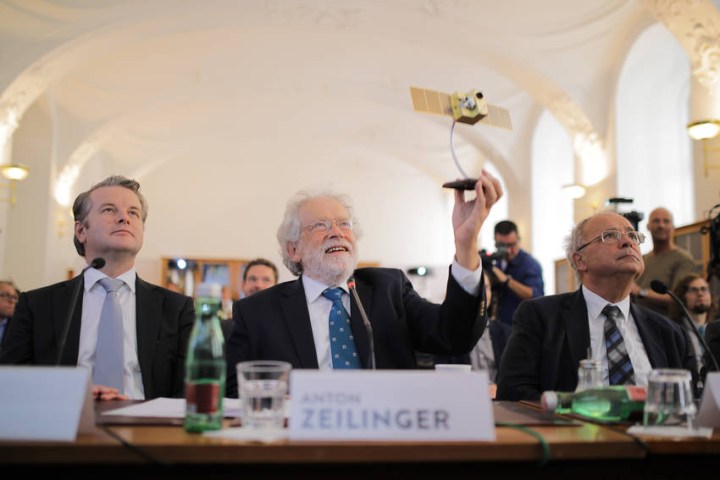
Encryption became a major talking point in the wake of the 2013 Edward Snowden revelations and has continued through this day as people search for ever greater security for their personal communications. Services like WhatsApp utilize end-to-end encryption, but as secure as that is, quantum encryption is far, far more complicated and effectively impossible to crack.
Due to the nature of quantum mechanics, if the quantum key that is generated to obfuscate a message — in this case a video call — were viewed by an outside party, its content would change, thereby rendering it useless. That would, in turn, inform those who sent and received the message that it was potentially intercepted, too.
To generate such a key, researchers at the Austrian Academy of Sciences and the Chinese Academy of Sciences, sent “photons” from the Chinese Micius satellite to ground stations on the Earth.
“The single photons with their various polarizations were […] transmitted as a sequence of ones and zeros to the ground station near the Austrian city of Graz,” explained researchers. “There, the polarization states were measured and compared randomly with the sequence sent by the satellite.”
The same procedure was then repeated on the ground, effectively creating two quantum keys. These were stored on the satellite, combined during orbit and then retransmitted to Earth. With a copy of the combined key at both ends of the eventual call, the researchers were able to verify the communication was legitimate.
When the video call between Vienna and Beijing took place, the researchers had no problem encrypting and decrypting the information both ways. If any changes had been noted in the data sent by the transmitter or receiver, the researchers would know that the call’s data had been intercepted. Although the data would still be unreadable, knowing someone has attempted to view it provides invaluable data when it comes to secure communications.
As effective as this encryption is, however, its unique hardware requirements mean it’s still a long way from being a mainstream obfuscation technology. Those concerned with privacy should still take note that researchers are working on future-proofing your security in a manner that should be near impossible to break, unlike current standards.
Editors' Recommendations
- Forget VR. Airglass made me actually enjoy video calls
- One-to-one Microsoft Teams video calls can now be end-to-end encrypted
- Barking mad? The DogPhone lets a canine call its owner
- How to do two-way Zoom calling on an Amazon Fire TV Cube
- Pro tips for improving the quality of your video calls



